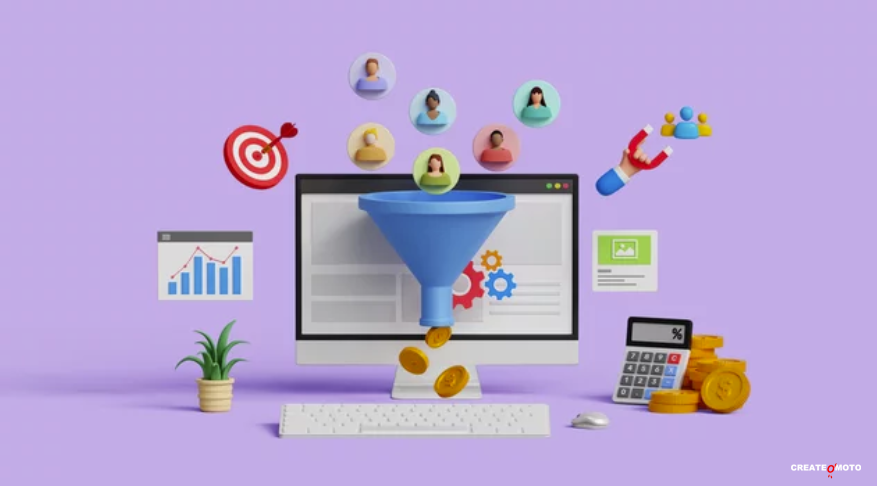
Lead generation in the B2B world is more than just a numbers game—it’s the art of human connection, a blend of understanding, resonance, and precision. It is a delicate balance between crafting value and positioning that value in ways that appeal to the curious, the skeptical, and the ready-to-purchase. You, as the voice of your business, must master this rhythm of discovery, dance with data, and move with intent.
Lead generation is not static, it is a flowing river of strategies. The water changes with trends, but the stones of solid tactics remain, guiding businesses to new opportunities, crafting a path to success. From your outreach to your nurturing process, the following insights are born from the tension between creativity and research.
The Power of Intent Data: Listening to Actions, Not Just Words
Beneath the surface of digital interactions lies intent data—the traces people leave behind when they show interest. Imagine footprints left in the sand, leading you to where the prospect is heading. To tap into this wealth of knowledge, you need tools that track behaviors like content downloads, page visits, and search queries. When you analyze these actions, they tell you why someone may be interested.
Intent data tools like Bombora allow businesses to identify which companies are already in the market for their products and services, letting you engage prospects at the right moment with tailored solutions.
When you harness intent data, you create a dialogue with prospects before they even fill out a form. It’s more than targeting; it’s anticipating, it’s being ready to meet someone halfway through their journey. This means your lead generation is no longer based on assumption, but on clear behavioral indicators.
Nurturing Through Content: Building Relationships, Not Just Pitches
People talk about nurturing as though it’s a step-by-step, automated process—emails in their inbox like seeds in a row. But nurturing is a much more human effort. Each piece of content should be like a whisper, a reassurance, a little push forward. You’re not just offering information; you’re offering solutions.
Think of creating value ladders, where each step builds on the last. Start with awareness: blogs that answer common pain points, or videos that explain complex solutions in simple terms. For instance, this Marketo resource explains how to optimize content strategy to build awareness.
Next comes consideration: white papers, case studies, and webinars that dig deeper into your offerings. These long-form content pieces become windows, letting prospects see the depth of your expertise and trustworthiness.
Finally, decision-making content should guide potential leads through the decision with confidence. These are your product demos, one-on-one consultations, or free trials. This is where trust transforms into commitment.
The Human Element: Personalization Beyond the Basics
Personalization today means more than just using someone’s name. It’s about recognizing where they are in their journey, and offering content that feels crafted for their unique needs. What if instead of generic follow-up emails, your outreach could anticipate questions before they even arise? Advanced CRMs like HubSpot provide that edge, allowing businesses to send highly personalized, behavior-driven messages to nurture leads more effectively.
The personalization doesn’t end there. Utilize retargeting ads on social media and search engines to keep your brand in their sights. When they’ve visited your site or engaged with your content, don’t let them disappear into the ether. Bring them back with targeted ads that reflect their behavior.
Imagine this: someone visits your website looking at your blog on “SaaS lead generation strategies.” A few days later, they’re served a targeted ad showcasing your latest whitepaper on optimizing SaaS marketing funnels. You’ve spoken directly to their interests without needing to chase them.
Cold Outreach: Crafting Connection From a Distance
In an age where inboxes are overflowing, the challenge is to make your message not feel like noise. Cold outreach may seem impersonal, but when done correctly, it’s about opening a door rather than knocking on one. Your goal is to spark curiosity with relevance.
Start with a researched approach. Don’t just send generic emails to every decision-maker in the industry. Focus on specificity. Is this lead from an industry you’ve had success with before? Mention it. Have they recently expanded, merged, or launched a new product? Reference it.
And remember, less is more. In outreach, brevity is your friend. A cold email should not feel like a sales pitch—it should feel like an invitation to learn more, to connect deeper, and to explore possibilities.
Social Proof: Harnessing the Voice of Others
Social proof is the echo of a satisfied customer, the ripple effect of a job well done. In B2B, case studies, testimonials, and client reviews become beacons of trust. When you showcase how your service helped a peer company achieve results, you’re not just talking to potential leads—you’re showing them proof.
Think of social proof as a kind of magnetism. It attracts those on the fence, reassuring them through the words and experiences of others. It’s one thing to tell a prospect you can increase their efficiency by 25%, but when another business vouches for it? That’s where the magic happens.
An Art, Not a Formula
B2B lead generation isn’t a science of ticking boxes—it’s an art of balancing creative intuition with data-driven insights. It’s about making connections feel personal, even when they’re scalable, and creating strategies that don’t just perform once, but evolve as your audience does.
Let your lead generation strategy breathe and adapt. Watch the digital footprints of your audience and listen to what they say through their actions. Then, step forward with intention. Trust that where there is a conversation, there is potential for connection.



0 Comments